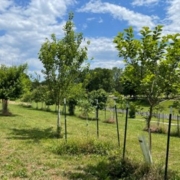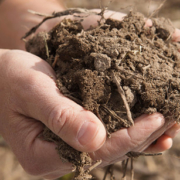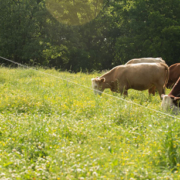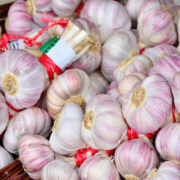Agroecological Crop Selection, Part 2
 Print This Post
Print This Post
By Justin Duncan, NCAT Agriculture Specialist
For the past couple years, NCAT has worked with the Southern Risk Management Education Center to provide training to farmers on how to better decide which crops to plant based on agroecological methods. This blog series will summarize the subject matter we shared with producers during those classes.
In my last blog, I discussed using extant plant communities to determine better species of crops to use in a given area versus trying to force a crop to grow in an unsuitable area. Wild relatives can be a very good indicator, but many factors come into play, such as how distinct their native growing environments are. Early settlers, upon seeing abundant wild grapes growing on the eastern seaboard, thought that Vitis vinifera would easily adapt to the region. What they didn’t take into account is how far removed the growing environments are between the native North American grape species and that of V. vinifera. European grapes grow in milder regions than their wild counterparts here. Differences in weather patterns and soil brought on plant stress, and plant stress brings forth pests and disease capitalized on the weakened plants to the point of elimination. On the other hand, the Asian varieties of persimmon (Diospyros kaki) do very well wherever Diospyros virginiana can grow since temperate regions of Asia are very similar to temperate regions here in the U.S. However, here in Texas, we have our own persimmon, and it thrives on calcareous soils in more arid areas than D. virginiana. I’ve never seen any of the Asian cultivars grown in these areas and would hazard a guess that they would fail there unless some serious environmental manipulation was undertaken. So, in a nutshell, pay close attention to what’s really happening before planting anything.
Where are we in the ecological succession? I never hear farmers or anyone else asking this question before clearing out a field, disking, furrowing, and planting something. I did my graduate work in cotton. Gossypium is related to, and in some cases is, a tree. Okay, maybe tree is an exaggeration, but in the case of Gossypium arboretum, it is a perennial shrub that can reach 16 feet in height. Trees exist in a different ecological succession stage than pioneering stage plants, also known as weeds.
Ecological succession is the process by which plant communities change over time, eventually yielding a climax community. Climax communities, such as forests, maintain equilibrium until they are disrupted by some sort of cataclysmic event, like fire or humans. Soil types are important, but so are the biological communities within the soils. I hear folks talk about fungally dominant and bacterially dominant soils. These indicators are important because they give an indication of where a given soil is in the ecological progression from a newly disturbed site to a climax community. It should matter to producers because how a crop ecologically arose, and the community of soil microbes present with its roots during that process impacts the health of that crop. I’d mentioned cotton because it’s funny to me that it is one of the most sprayed crops in our current production systems, yet it is grown in soils in the wrong ecological stage for it to be healthy on its own.
Think about plants in nature. They have survived, on their own without any need for human intervention, since time immemorial. What makes our crop plants different is selective breeding and cultivation in environments far from their original sites. Fortunately for us, we can learn once we get a better understanding of the processes involved. We can manipulate soils with amendments to better mimic the necessary requirements for healthy crop production OR we can choose the right crops for our soil based on wild relatives and needs based upon ecological succession.
One consideration regarding which crop to plant is whether it is an annual or a perennial. And this may take some real research because, although we produce cotton as an annual, it can be quite perennial in habit. The answer to whether a crop is an annual or a perennial can be a clue to the ecological succession stage the soil needs to be in for ideal production. A perennial plant might require more quality compost added to the soil to help swing the balance of soil microbes to a more favorable fungus content.
For me, it’s all about getting to know the plant’s needs. I may not talk to them, but I do listen, or, rather, observe them.
Agroecological crop selection has many other benefits that you can read all about in the next installment of this series, which is so graciously funded by the Southern Risk Management Education Center.
Related ATTRA Resources:
Agroecological Crop Selection, Part 1
Farmscaping to Enhance Biological Control
Other Resources:
Southern Risk Management Education Center
Ecological succession, explained
This blog is produced by the National Center for Appropriate Technology through the ATTRA Sustainable Agriculture program, under a cooperative agreement with USDA Rural Development. This blog was also made possible in part by funding from the Southern Risk Management Education Center, USDA National Institute of Food and Agriculture, through the University of Arkansas. ATTRA.NCAT.ORG.



 USDA
USDA







